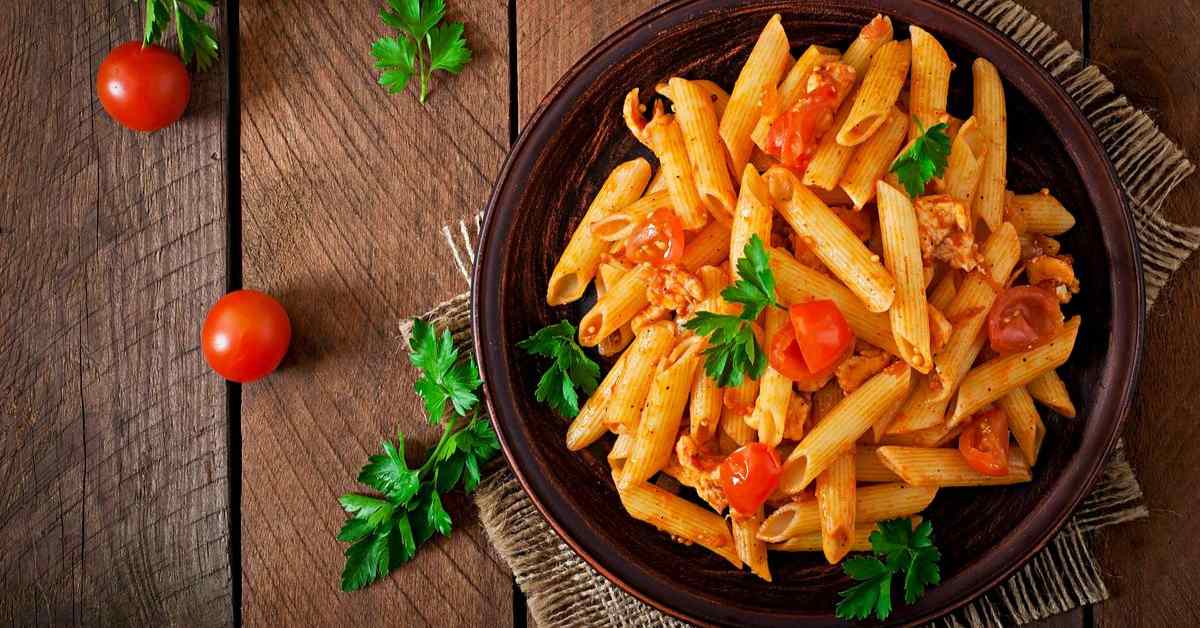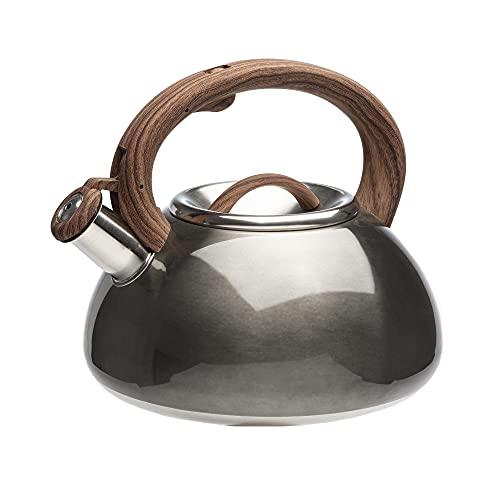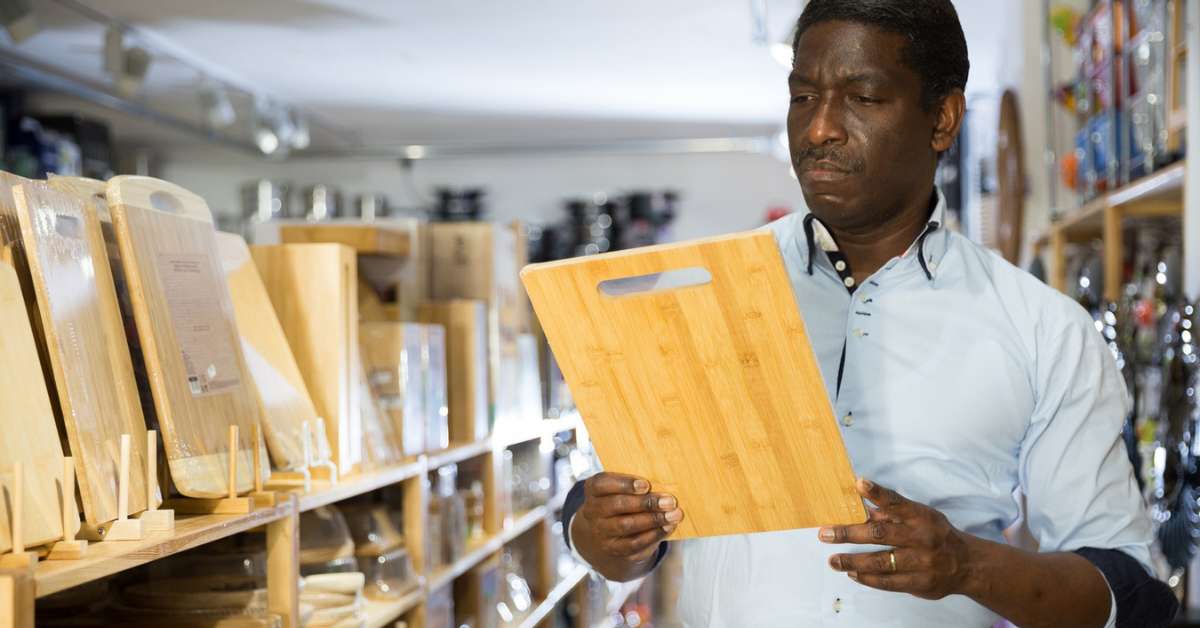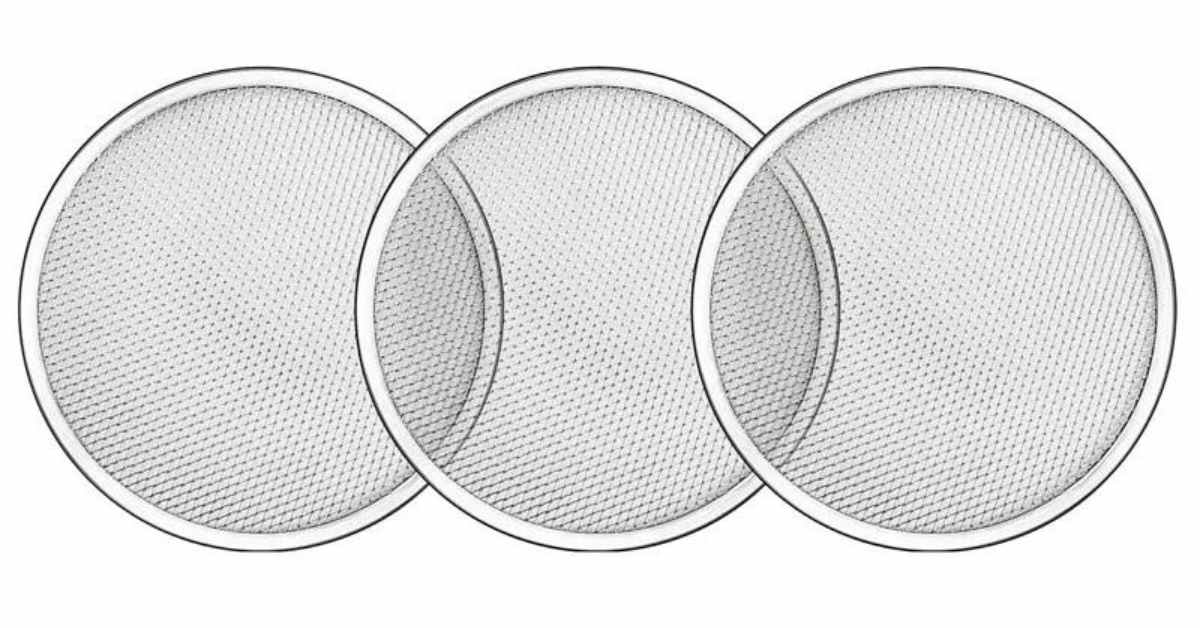If you’re a pasta enthusiast, you know that a piping hot bowl of freshly cooked pasta is a delight to the senses. However, there are occasions when you may need to keep your pasta warm for an extended period, such as during a family gathering, potluck, or party. Here comes the question: Can you keep pasta warm in a crock pot?
In this article, we’ll delve into culinary possibilities and explore using a crock pot to keep your pasta warm and ready to serve. Discover the tips, tricks, and best practices to ensure your pasta stays deliciously warm without sacrificing its taste or texture. Let’s dive in and uncover this pasta dilemma in detail!
Table of Contents
ToggleWhat is Crock Pots
Before we delve into the art of keeping pasta warm in a crock pot, let’s first understand what a crock pot is. Also known as a slow cooker, a crock pot is a convenient kitchen appliance to simmer food at low temperatures. It comprises a lidded ceramic or porcelain jar and sits atop a heating element.
The slow and steady cooking process allows flavors to meld together, resulting in tender, succulent dishes perfect for busy individuals and families. Crock pots come in various sizes and settings, making them versatile for recipe preparation.
From hearty stews to tender roasts, the crock pot has become a beloved kitchen companion for those seeking effortless and delicious meals. Now that we understand what a crock pot is let’s explore how it can warm our pasta, ensuring a delightful culinary experience for everyone involved.
Cooking and Storing Pasta
Cooking pasta to perfection is the first step in ensuring it stays warm and delicious in a crock pot. To achieve the ideal texture, follow these simple steps. Bring a pot of water to a rolling boil; add a generous amount of salt to enhance the pasta’s flavour.
Once the water reaches a vigorous boil, gently add the pasta and stir occasionally to prevent sticking. Cook the pasta until it’s al dente, meaning it should be slightly firm when bitten. Avoid overcooking, as the pasta will continue to cook slightly in the crock pot.
Preparing Pasta for Storage in a Crock Pot:
To ensure your pasta retains its taste and consistency in the crock pot, it’s essential to prepare it properly before transferring it. Once the pasta reaches the desired level of doneness, drain it in a colander and rinse it with cold water to stop cooking.
Drizzle olive oil over the pasta and toss it gently to prevent clumping. This step will keep the pasta moist and prevent it from sticking together during storage. Now, your pasta is ready to be placed in the crock pot.
Cooking Pasta to the Right Consistency:
Achieving perfect consistency is critical to enjoying freshly cooked pasta or keeping warm in a crock pot. Remember that pasta will continue to absorb liquid while sitting in the crock pot, so cooking it al dente ensures it won’t become mushy or overcooked after some time. The crock pot’s gentle heat will help maintain the pasta’s texture without compromising its overall quality.
Storing Pasta at the Right Temperature:
Once your cooked pasta is ready for the crock pot, set the appliance to its “Warm” setting. This setting keeps the pasta at a safe temperature without cooking it further. Avoid leaving the pasta in the crock pot for an extended period, as it can lose its desirable texture and flavour over time. For best results, serve the pasta within 2-3 hours of placing it in the crock pot to ensure it remains deliciously warm and ready to be savoured.
By following these simple guidelines for cooking, preparing, and storing pasta in a crock pot, you can maintain the perfect balance of taste and texture, allowing your guests or family to enjoy a delightful pasta experience every time.
Keeping Pasta Warm in a Crock Pot
Now that we’ve covered the essential steps for cooking and storing pasta let’s explore how to keep it warm and inviting in a crock pot. Once your pasta is prepared and dressed with a drizzle of olive oil to prevent clumping, transfer it to the preheated crock pot.
If you plan to serve the pasta immediately, set the crock pot to its lowest heat to maintain a gentle warmth. However, if you anticipate a more extended duration before serving, opt for the “Warm” setting to keep the pasta at a safe temperature without continuing to cook it.
Avoid Overcooking in the Crock Pot:
Avoid leaving it in the crock pot for extended periods to ensure your pasta retains its delectable texture. While the crock pot is excellent for keeping dishes warm, it could be more suitable for prolonged storage, as the pasta may lose its al dente firmness and become overly soft. Aim to serve the pasta within 2-3 hours of placing it in the crock pot to preserve its taste and consistency.
Maintaining Moisture and Flavor:
Add a small amount of warm water or broth to keep the pasta moist and flavorful while it rests in the crock pot. Gently stir the pasta to distribute the liquid evenly, preventing any dryness or stickiness.
Additionally, if you have any reserved pasta sauce or toppings, consider adding a thin layer to the top of the pasta in the crock pot. This will infuse more flavour into the pasta and prevent it from drying.
Using a Heat-Safe Lid:
A heat-safe lid keeps your pasta warm in the crock pot. Once the pasta is in the pool, place the lid securely on top to retain heat effectively. The cover helps create a sealed environment, allowing the pasta to stay warm for an extended period without compromising its taste or quality.
Stirring and Testing:
If the pasta has been in the crock pot for some time before serving, give it a gentle stir before dishing it out. This will redistribute any accumulated moisture and ensure consistent warmth throughout. Before serving, you can also do a quick taste test to ensure the pasta is still at its best, adjusting seasonings or adding more sauce if needed.
Following these tips and guidelines, you can master keeping pasta warm in a crock pot, providing your guests or family with a delicious and comforting dining experience.
Safety Precautions
While using a crock pot to keep pasta warm can be convenient and practical, it’s essential to prioritize safety to ensure a worry-free culinary experience. Here are some crucial safety precautions to keep in mind:
Temperature Monitoring: Always monitor the crock pot’s temperature to prevent the pasta from overcooking or cooling to unsafe levels. If your crock pot has different heat settings, use the lowest one to maintain a gentle warmth without further cooking the pasta.
Timely Serving: Avoid leaving cooked pasta in the crock pot for extended periods, as it can lose texture and flavour. Aim to serve the pasta within 2-3 hours to ensure it remains deliciously al dente and appetizing.
Proper Handling of the Crock Pot: Be cautious while handling the crock pot, as it can get hot during use. Always use oven mitts or kitchen towels to take the bank or the lid to prevent accidental burns.
Avoid Overfilling: Avoid overfilling the crock pot to ensure even heat distribution and safe cooking. Following the manufacturer’s guidelines regarding the maximum fill level for your specific model is best.
Thorough Cleaning: Before using the crock pot, ensure it’s clean and free from residues or debris. Properly wash the pool and the lid before and after each use to maintain food safety and hygiene.
Safe Power Usage: When using an electrical kitchen appliance like a crock pot, plug it into a properly functioning electrical outlet. Avoid using extension cords or adapters that may cause electrical hazards.
Food Safety Precautions: If you’re using a crock pot to keep pasta warm that contains meat, dairy, or any perishable ingredients, be vigilant about food safety. Ensure the pasta and its components are correctly cooked and refrigerated when not in use to prevent the growth of harmful bacteria.
Keep Out of Reach of Children and Pets: To prevent accidents, ensure that the crock pot is placed in a location inaccessible to curious children or pets. The exterior and lid can become very hot during use and pose a risk to little hands and paws.
By adhering to these safety precautions, you can confidently use your crock pot to keep pasta warm without any concerns, creating a delightful dining experience for yourself and your loved ones.
Advantages of Keeping Pasta Warm in a Crock Pot

Saves Time and Energy:
Using a crock pot to warm pasta offers a significant time and energy efficiency advantage. Once the pasta is perfectly cooked, transfer it to the crock pot and set it to the desired heat setting. This eliminates the need to constantly monitor or reheat the pasta, allowing you to focus on other aspects of meal preparation or enjoy the company of your guests.
Whether it’s a busy weeknight dinner or a gathering with friends, the crock pot keeps the pasta warm while you attend to other tasks.
Increases Flexibility in Meal Planning:
Keeping pasta warm in a crock pot allows for more flexibility in meal planning. You can prepare the pasta in advance, even hours before the actual mealtime, and have it ready to serve whenever you’re ready to dine.
This convenience is particularly beneficial when hosting events or parties, enabling you to manage multiple dishes simultaneously. Whether serving pasta as the main course or as a side dish, the crock pot ensures it stays warm and ready to be enjoyed without rush or last-minute cooking.
Better Taste and Texture of Pasta:
One of the key advantages of using a crock pot to keep pasta warm is the preservation of its taste and texture. Maintaining the pasta at a low and consistent temperature continues to absorb any flavours from the sauce or toppings, enhancing its overall taste profile.
Additionally, the gentle heat of the crock pot prevents the pasta from becoming overcooked or dry, preserving its delightful al dente texture. When it’s time to serve, you’ll have perfectly warmed pasta as delicious as when it was first cooked.
Ideal for Buffets and Potlucks:
For gatherings with a buffet-style setup or potluck events, a crock pot is an excellent companion for keeping pasta warm and inviting. Guests can help themselves to the pasta throughout the event, ensuring everyone enjoys a hot and satisfying meal. The crock pot’s consistent warmth also means the last serving will be as delightful as the first.
Less Waste and More Enjoyment:
Keeping pasta warm in a crock pot reduces the likelihood of wasted food. With the ability to store and serve the pasta at the ideal temperature, there’s no need to reheat or discard leftover portions. This saves food and allows everyone to savour the pasta at its best, promoting a more enjoyable dining experience.
Using a crock pot to keep pasta warm offers numerous advantages, from time and energy savings to enhanced taste and texture. It brings convenience and flexibility to meal planning and ensures everyone can enjoy a delicious, comforting bowl of pasta whenever they’re ready to indulge.
Disadvantages of Keeping Pasta Warm in a Crock Pot
Risk of Overcooking or Drying Out Pasta:
While a crock pot can be a handy tool for keeping pasta warm, there is a risk of overcooking or drying out the pasta if left in the bank for too long. The gentle heat of the crock pot can continue to cook the pasta, causing it to become softer than desired. Additionally, the pasta may dry out without proper moisture retention, leading to a less appealing texture.
Not Suitable for All Types of Pasta:
Certain types of pasta may not fare well in a crock pot, especially delicate varieties like angel hair or fresh pasta. These types of pasta can become overly mushy or break apart when exposed to prolonged heat. Sturdier pasta shapes, such as penne or fusilli, tend to hold up better in the crock pot, maintaining their shape and texture.
Can Pose a Food Safety Risk if Not Handled Correctly:
Using a crock pot to warm pasta can pose a food safety risk if incorrectly handled. Bacteria can multiply rapidly in the “Danger Zone” (40°F to 140°F or 4°C to 60°C), potentially leading to foodborne illnesses.
To minimize this risk, it’s crucial to serve the pasta within a safe timeframe and keep it at the proper temperature. Avoid leaving the pasta in the crock pot for an extended period, and if there are any leftovers, refrigerate them promptly.
Texture Changes Over Time:
As time passes, the texture of the pasta in the crock pot can change. The prolonged exposure to heat can lead to a loss of the desirable al dente texture, resulting in softer pasta that may need to be more enjoyable. While the crock pot can maintain warmth initially, it may not sustain the pasta’s ideal texture over extended periods.
Requires Close Monitoring:
It requires close monitoring to ensure the pasta remains at its best in the crock pot. Regularly check the pasta’s consistency and moisture levels, making adjustments to prevent overcooking or drying out.
This level of attention may be challenging, especially if you have other tasks to manage during meal preparation or entertaining guests. While using a crock pot to keep pasta warm has advantages, there are also notable disadvantages.
To avoid potential pitfalls, it’s essential to be mindful of the pasta’s cooking time, choose suitable pasta types, and adhere to food safety guidelines. With proper attention and planning, you can make the most of the crock pot’s convenience while maintaining your pasta dishes’ delightful taste and texture.
Alternatives to Keeping Pasta Warm in a Crock Pot
Using a Warming Tray:
A warming tray is a practical and efficient alternative to a crock pot for keeping pasta warm. Warming trays come in various sizes and are designed to maintain a consistent low heat, ideal for keeping dishes at serving temperature without overcooking.
Place the cooked pasta on the warming tray, cover it with a heat-safe lid or foil, and set it to its lowest heat setting. This method lets you keep the pasta warm for an extended period, making it perfect for buffet-style gatherings or potluck events.
Storing Pasta in a Thermos:
Storing pasta in a thermos can be convenient for individual servings or on-the-go situations. Before placing the pasta in the thermos, rinse it with hot water to preheat it.
Then, fill the thermos with the cooked pasta and secure the lid tightly. A well-insulated thermos can keep the pasta warm for several hours, making it an excellent option for packed lunches, picnics, or outdoor adventures.
Reheating Pasta in the Oven or Microwave:
If you prefer to serve the pasta hot rather than warm, reheating it in the oven or microwave is a quick and effective option. When using the range, place the pasta in an oven-safe dish, cover it with foil, and reheat it at a low temperature to prevent overcooking.
Alternatively, when using the microwave, place the pasta in a microwave-safe container, add a splash of water or sauce to retain moisture, and heat it in short intervals, stirring in between to ensure even reheating.
By exploring these alternatives, you can find the method that best suits your needs and maintains the quality of your pasta dishes. Whether it’s a large gathering or a simple family dinner, these options allow you to serve pasta at the perfect temperature, ensuring a delightful dining experience for everyone.
Best Practices for Keeping Pasta Warm in a Crock Pot
Timing is Key: While a crock pot can be a helpful tool for keeping pasta warm, it’s crucial to time it right. Aim to transfer the cooked pasta to the crock pot just before you’re ready to serve it. Avoid leaving the pasta in the crock pot for an extended period, as it can lead to overcooking or drying out.
Use the Lowest Heat Setting: To maintain the pasta at the ideal serving temperature without further cooking, set the crock pot to its lowest heat setting. This gentle heat ensures the pasta stays warm and retains its al dente texture.
Add Moisture if Needed: If the pasta is drying in the crock pot, add a small amount of warm water, broth, or reserved pasta sauce. Gently stir the pasta to evenly distribute the moisture and prevent dry spots.
Serve Within 2-3 Hours: To ensure the pasta remains at its best, plan to serve it within 2-3 hours of placing it in the crock pot. This timeframe allows you to enjoy the pasta while it’s still flavorful and has the desired texture.
Properly Handle the Crock Pot: Take care when handling the crock pot, as it can become hot during use. Always use oven mitts or kitchen towels to hold the bank or the lid to avoid accidental burns.
Choose Suitable Pasta Shapes: Some pasta shapes hold up better in a crock pot than others. Opt for sturdier varieties like penne, fusilli, or farfalle, as they are less likely to become overly mushy when kept warm.
Avoid Overfilling: Avoid overfilling the crock pot to ensure even heat distribution. Follow the manufacturer’s guidelines regarding the maximum fill level for your specific model.
Monitor the pasta Consistently: Regularly check its texture and moisture levels while in the crock pot. Adjust the heat setting or add liquid to maintain the desired quality.
Preheat the Crock Pot: To ensure the pasta stays warm, preheat the crock pot before transferring the cooked pasta. This helps maintain the initial warmth of the pasta and prevents it from cooling down too quickly.
Consider Food Safety: Be mindful of food safety guidelines, mainly if your pasta contains perishable ingredients like meat or dairy. Serve the pasta within a safe timeframe and refrigerate any leftovers promptly.
By following these best practices, you can make the most of using a crock pot to keep your pasta warm and create a delightful dining experience for yourself and your guests. Enjoy the convenience and comfort of enjoying perfectly warmed pasta without any hassle!
Cleaning and Maintaining a Crock Pot
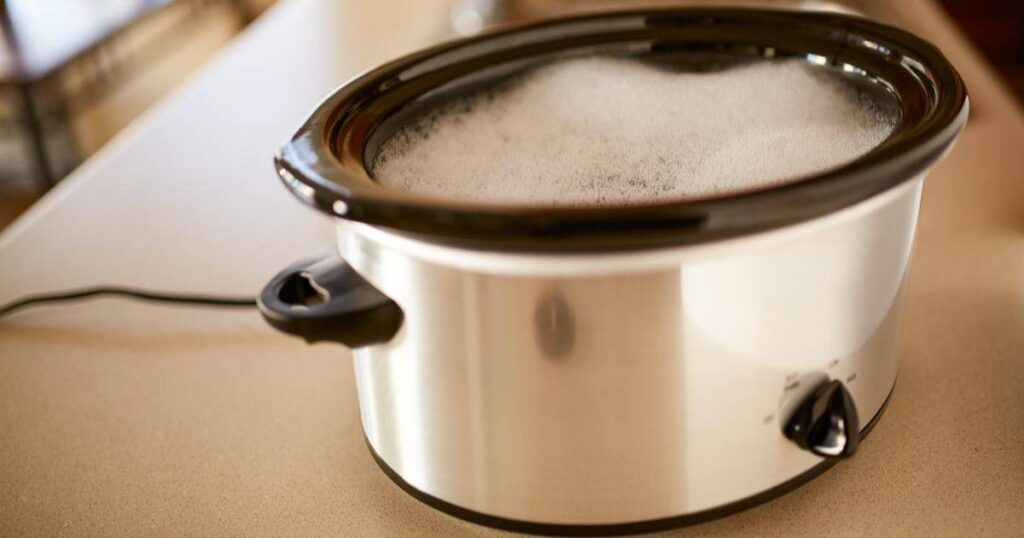
A well-maintained crock pot is essential for preparing delicious meals and ensuring food safety. Here are some tips for cleaning and maintaining your crock pot:
Regular Cleaning: After each use, allow the crock pot to cool down before cleaning. Remove the crock (the ceramic or porcelain inner pot) from the heating base and wash it with warm, soapy water. Use a soft sponge or cloth to avoid scratching the surface. You can soak the crock in warm, soapy water before scrubbing if there are stubborn stains.
Handling the Lid: The crock pot lid can be made of glass or other materials. Carefully clean it with warm, soapy water after use. Be gentle while handling the cover to prevent breakage. Avoid sudden temperature changes, such as placing a hot top in cold water, as this can cause damage.
Cleaning the Heating Base: Wipe down the heating base with a damp cloth or sponge, ensuring it’s unplugged and cooled down. Avoid submerging the bottom in water or exposing it to excessive moisture, as it contains electrical components.
Dealing with Stubborn Stains and Odors: You can use baking soda and water to create a gentle cleaning paste for persistent stains or lingering food odours. Apply the paste to the affected areas and let it sit for a few minutes before rinsing it. This method can help remove stains and neutralize odours.
Avoiding Abrasive Cleaners: Avoid using abrasive cleaners, steel wool, or harsh chemicals on the crock pot, as they can damage the surface and affect the pot’s performance. Stick to mild dish soap and non-abrasive cleaning tools.
Storage: When storing the crock pot, ensure it’s scorched to prevent mould or mildew growth. Store the crock and the lid separately to allow for proper ventilation. Keep the crock pot in a cool, dry place away from direct sunlight and extreme temperatures.
Regular Maintenance Checks: Perform routine maintenance checks on the crock pot’s electrical components, cord, and plug. Look for any signs of wear or damage, and if you notice any issues, contact the manufacturer or a qualified technician for repairs.
Follow Manufacturer’s Instructions: Always follow the manufacturer’s instructions for cleaning and maintenance, as specific models may have unique care requirements. Refer to the user manual for guidance on proper cleaning and storage procedures.
By following these cleaning and maintenance practices, you can ensure that your crock pot remains in top condition, providing you with years of reliable service and helping you easily create delicious meals.
Conclusion
Using a crock pot to warm pasta can be time-saving and convenient, especially when hosting gatherings or planning meals in advance. You can maintain the pasta’s delightful taste and texture by following best practices, such as timing the pasta placement, using the lowest heat setting, and monitoring moisture levels.
However, it’s essential to consider the disadvantages, like the risk of overcooking and the need for close monitoring. If a crock pot isn’t suitable for your pasta type or occasion, alternatives like warming trays or storing pasta in thermoses can be equally effective. Following proper cleaning and maintenance practices, your crock pot will be a reliable kitchen companion, allowing you to savour warm and satisfying pasta dishes quickly and confidently.
FAQs
Can I cook pasta in a crock pot?
Yes, you can cook pasta in a crock pot, but following the correct method is essential. To cook pasta from raw in a crock pot, add enough liquid (like water or broth) to cover the pasta and set it on a high heat setting for 1-2 hours, stirring occasionally. However, the traditional stovetop method is generally faster and more practical for cooking pasta from scratch.
How long can I store pasta in a crock pot?
It’s best to serve pasta in a crock pot within 2-3 hours to maintain its taste and texture. Leaving pasta in the crock pot for an extended period can lead to overcooking or drying out.
Can I reheat pasta in a crock pot?
While a crock pot is primarily designed for low and slow cooking, it can also reheat pasta. To reheat pasta in a crock pot, add a small amount of liquid (such as water or sauce) to the pasta to prevent it from drying out, and set the crock pot to the lowest heat setting. Stir occasionally to ensure even heating.
How do you keep the pasta from getting mushy in a crock pot?
To prevent pasta from becoming mushy in a crock pot, follow these steps: Cook the pasta until it’s al dente (slightly firm to the bite) before transferring it to the crock pot. Rinse the pasta with cold water to stop the cooking process and prevent overcooking in the crock pot. Add a drizzle of olive oil and toss the pasta gently to prevent clumping. Set the crock pot to its lowest heat to maintain a gentle warmth without further cooking the pasta.
Will pasta get mushy in a crock pot?
Pasta can become mushy in a crock pot if cooked too long or left in the bank for an extended period. To avoid mushy pasta, boil it until it’s al dente before transferring it to the crock pot. Additionally, serve the pasta within 2-3 hours of placing it in the crock pot to maintain its desirable texture.

